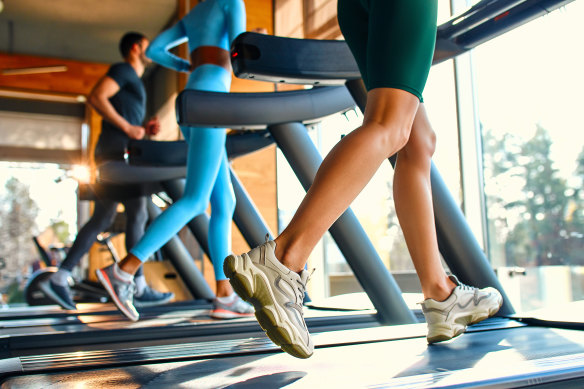Not everyone finds exercise rewarding. These four tips might help
By Danielle Friedman
We’ve all encountered that person who comes back from the gym or a run seemingly high on life. In fact, scientists say that even a single bout of exercise can alter your neurochemistry in ways that create feelings of hope, calm, connection and a generally better mood.
But for others, a workout just leaves them feeling worn out.
“It’s normal not to find exercise rewarding,” said Daniel Lieberman, an evolutionary biologist at Harvard University. “There’s nothing wrong with you.”

Exercise also triggers dopamine, a much-debated neurotransmitter that creates a feeling of reward.Credit: iStock
While some people are simply more genetically or psychologically inclined to enjoy exercise, recent discoveries have helped experts understand why it can be such a high. And, they say, by making a few changes to your workout, you can train your body and mind to find exercise more pleasurable.
It’s not just about endorphins.
Scientists once thought the rush people felt from exercise came exclusively from endorphins, which act like natural opioids in the brain by relieving pain. But in recent decades, researchers have discovered a more complex cocktail of other key “feel-good” chemicals produced during movement.
Each ingredient plays a distinct but complementary role, said Julia Basso, an assistant professor at Virginia Tech who runs a lab studying the effects of exercise on the brain. “These neurochemicals are really working in tandem,” she said.
The most potent players appear to be endocannabinoids, which share similar molecular structure with THC, and bind to the same receptors in the brain – giving you that buzzy feeling that all is right in the world.
Exercise also triggers dopamine, a much-debated neurotransmitter that creates a feeling of reward, and conditions you to pursue that reward. It’s one reason people get hooked on exercise: “to come back for that hit,” Basso said.
Physical activity also spurs the release of serotonin, which helps you to feel focused and calm. And most recently, scientists have discovered another chemical at play: oxytocin, a hormone that helps you bond with other people and feel a sense of social connection.
How can you get the biggest mood boost from exercise?
Get your heart rate up for at least 30 minutes
It’s normal for the first 20 to 30 minutes of exercise to feel like a slog. That’s because it seems to take at least 20 minutes of moderate aerobic activity for the endocannabinoid system to kick in and start to lift your mood.
The longer you’re able to sustain an aerobic workout at a moderate level of intensity — one in which you could carry on a conversation without becoming winded — the more your endocannabinoids will be flowing, and the higher your boost will be.
Give yourself at least three weeks
Just as your muscles require time to build, your brain takes time to develop a robust dopamine reward system for exercising. And the less physically active you are, the less responsive this dopamine system will be.
Research suggests that, if you haven’t been active in a while, it takes about three weeks of consistent exercise before it starts to feel rewarding – and for most people to want to come back for more, Basso said. That said, depending on your individual fitness level and neurochemistry, it could take shorter or longer; so if you don’t feel a kind of magical pull toward exercise after a month, don’t despair and keep going.

Nearly every type of exercise benefits mood.Credit: Getty
Make it social
When you exercise with friends or in groups, you will set yourself up to get twice the oxytocin boost, first from the physical activity itself, then from the social interaction.
The flood of oxytocin may be responsible for the powerful social connection that some people experience when moving in unison with others – our brains can be tricked into a feeling of personal boundaries dissolving, Basso said. This effect is especially apparent when we dance.
Mix things up
While moderately to vigorously intense aerobic workouts seem to be most effective at triggering a natural high, nearly every type of exercise benefits mood, said Ben Singh, an exercise physiologist and research fellow at the University of South Australia who, in 2023, published a large review of exercise and mental health studies.
Different types of workouts – aerobic, resistance and mindfulness practices such as yoga – release different combinations of mood-enhancing chemicals.
To set yourself up for success, shop around until you find activities you find fun or rewarding – or at least don’t hate, said Cassandra Vieten, a clinical professor of psychology and director of the Centre for Mindfulness at the University of California, San Diego.
“Track your mood and how much you like something,” she said, “and see if you can rotate different types of exercise until you find the one you love.”
The New York Times
Make the most of your health, relationships, fitness and nutrition with our Live Well newsletter. Get it in your inbox every Monday.